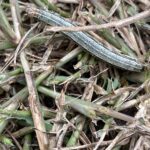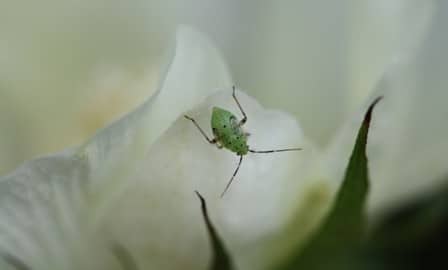
We have yet another round of fall armyworms infesting bermudagrass here at the station. Others have reported picking up some FAW larvae in late-planted soybeans. Continue reading

We have yet another round of fall armyworms infesting bermudagrass here at the station. Others have reported picking up some FAW larvae in late-planted soybeans. Continue reading
Many soybeans in Tennessee have entered the reproductive stages and this is a critical time for scouting insects. This is especially true for fields in the later development stages with seed forming in pods as they are very attractive to several species of stink bugs, which are seed feeders. Continue reading
The bollworm flight overall this year has been low, slow and a trickle flight. Moth traps indicate that we have an increase in moth activity in spots and this is occurring later in the season than normal. Bollworm can be a significant pest of cotton and soybeans, particularly late soybeans that are just flowering during the flight. As such, the large 2021 wheat crop that was planted to double crop soybeans in June and July will need to be monitored. Wide row soybeans are especially attractive to moths. Continue reading
We are currently experiencing another round of fall armyworm in bermudagrass here at the station in Jackson. We wouldn’t be surprised if there were other outbreaks occurring elsewhere. Please be vigilant in scouting bermudagrass pastures and sorghum Sudan grass. These larvae can do a lot of damage in a short amount of time so please be on the lookout! Please refer to a previous blog for treatment recommendations. Continue reading
Tarnished plant bugs are the #1 insect pest of cotton in Tennessee. In the fall of the year, tarnished plant bug (TPB) nymphs develop into adults on weedy hosts, and these adults overwinter on these hosts or plant debris. Previous studies have found that overwintered populations of tarnished plant bugs emerge from diapause in late winter or early spring, triggered by a combination of cues including a good food source and warm temperatures. Continue reading
One day this winter at the research station, an administrative assistant discovered many very small, brown insects crawling on the floor and wall near the bottom of a stairwell. She brought them to the attention of the Bugs Crew and Dr. Stewart identified them as granary weevils (Coleoptera: Superfamily Curculionidae: Subfamily Dryophthorinae). He then knew that there was some corn or other whole grain somewhere nearby that these weevils were feeding on. Indeed, there were some small baskets of shelled field corn used in an educational display, but now stored in a closet, that were heavily infested with these pests. Continue reading

Tarnished plant bugs are the #1 insect pest of cotton in Tennessee. In the fall of the year, tarnished plant bug (TPB) nymphs develop into adults on weedy hosts in response to decreasing day lengths (Snodgrass 2014). Continue reading

Adult flies in the Syrphidae family are conspicuous day-flying insects that are very skilled at hovering, and love to frequent flowers, which led to their common names of “hover flies” or “flower flies”. They are brightly colored and are very abundant in many familiar environments. Many of the hover flies strongly mimic bees in coloration and sound and it is no wonder why many folks confuse them for being small bees or even pests. Continue reading